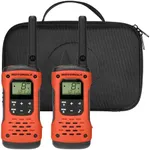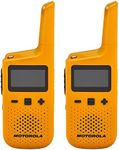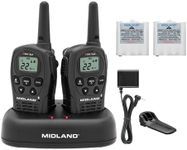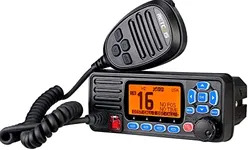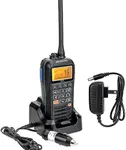Buying Guide for the Best Reception Radios
When choosing a reception radio, it's important to consider several key specifications to ensure you get the best fit for your needs. Reception radios can vary greatly in terms of features, performance, and usability. Understanding these specifications will help you make an informed decision and find a radio that meets your specific requirements, whether you're using it for casual listening, emergency preparedness, or as a hobbyist.Frequency RangeThe frequency range of a reception radio determines the types of signals it can receive. This is important because different frequencies carry different types of broadcasts, such as AM, FM, shortwave, and weather channels. A wider frequency range means the radio can pick up more types of broadcasts. If you are interested in listening to international broadcasts or emergency weather updates, look for a radio with a broad frequency range that includes shortwave and weather bands. For casual listening to local stations, an AM/FM radio will suffice.
SensitivitySensitivity refers to the radio's ability to pick up weak signals. This is crucial if you are in an area with poor reception or if you want to listen to distant stations. Radios with higher sensitivity can pick up weaker signals more clearly. Sensitivity is often measured in microvolts (µV); lower values indicate higher sensitivity. If you live in a rural area or plan to use the radio in remote locations, opt for a model with high sensitivity.
SelectivitySelectivity is the radio's ability to distinguish between closely spaced signals. This is important in areas with many radio stations, as it helps prevent interference from adjacent channels. Higher selectivity means the radio can better isolate the desired signal from others. Selectivity is usually measured in decibels (dB); higher values indicate better selectivity. If you live in an urban area with many radio stations, choose a radio with high selectivity to avoid interference.
PortabilityPortability refers to the ease with which you can carry and use the radio on the go. This is important if you plan to use the radio outdoors, during travel, or in emergency situations. Portable radios are typically smaller, lighter, and battery-operated. If you need a radio for outdoor activities or emergencies, look for a compact, lightweight model with a long battery life. For home use, portability may be less of a concern, and you might prefer a larger, more powerful radio.
Power SourceThe power source of a reception radio determines how it is powered and how long it can operate. This is important for ensuring the radio is usable in different situations. Common power sources include batteries, rechargeable batteries, and AC power. Some radios also have solar panels or hand cranks for emergency power. If you need a radio for emergency preparedness, look for one with multiple power options, including battery and manual power. For regular home use, an AC-powered radio may be more convenient.
Audio QualityAudio quality refers to the clarity and richness of the sound produced by the radio. This is important for an enjoyable listening experience. Factors affecting audio quality include the speaker size, design, and the radio's internal circuitry. If you value high-quality sound, look for a radio with good speakers and positive reviews regarding audio performance. For casual listening, audio quality may be less critical, and a basic model may suffice.
Additional FeaturesAdditional features can enhance the functionality and convenience of a reception radio. These may include digital tuning, preset station memory, alarm clock, Bluetooth connectivity, and weather alerts. These features can be important depending on how you plan to use the radio. For example, digital tuning and preset memory can make it easier to find and save your favorite stations, while Bluetooth connectivity allows you to use the radio as a speaker for other devices. Consider which additional features are important to you based on your intended use.



